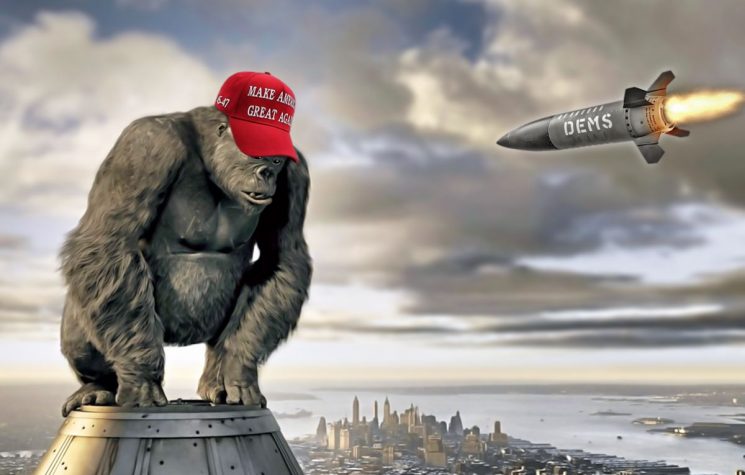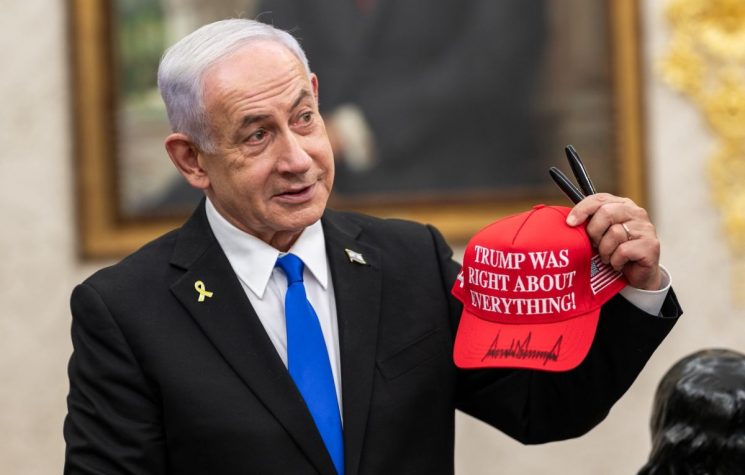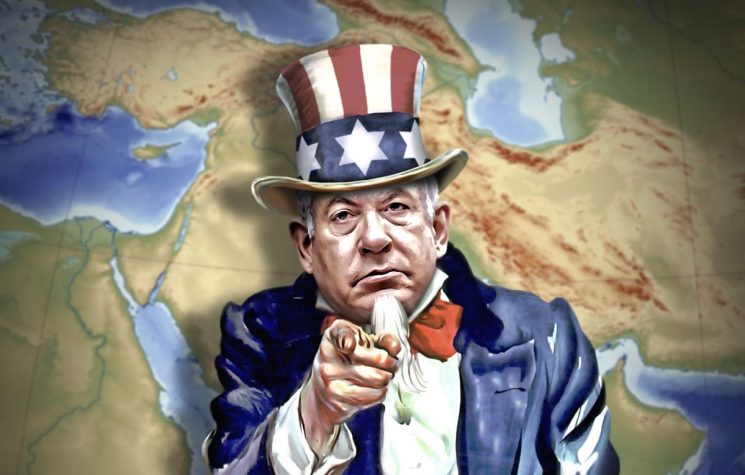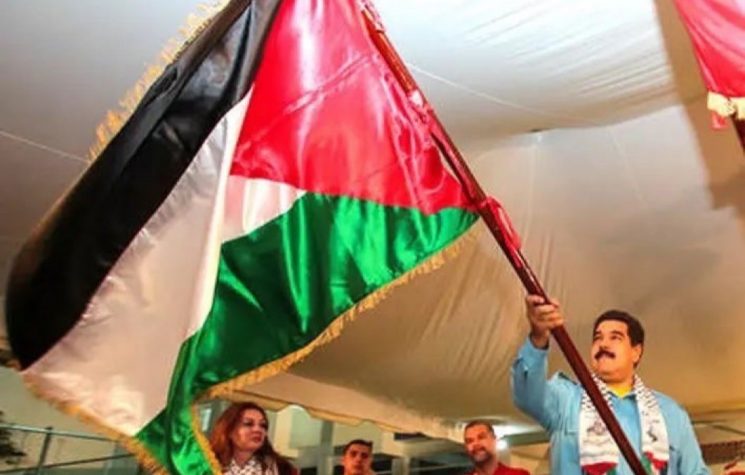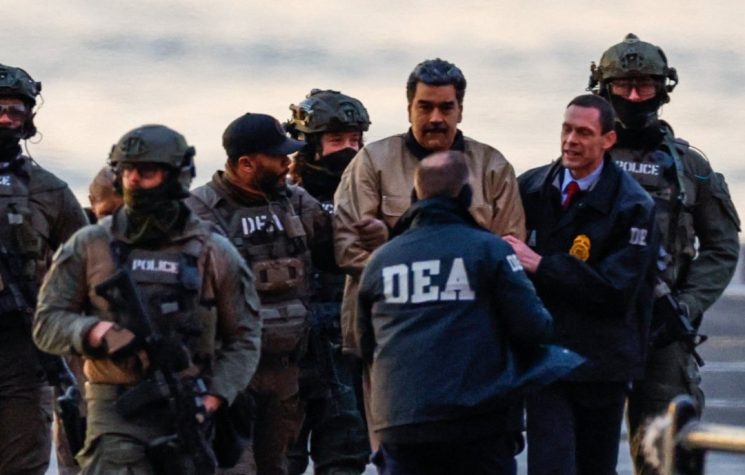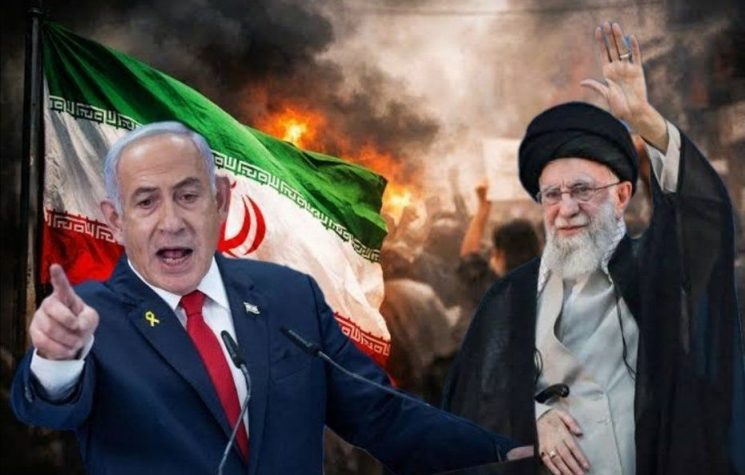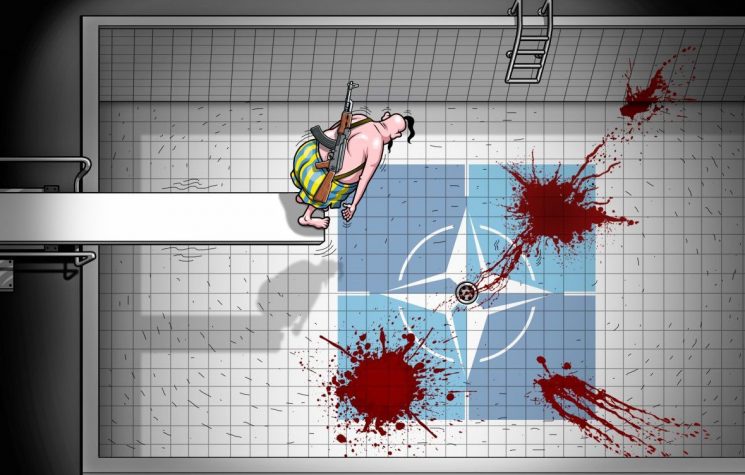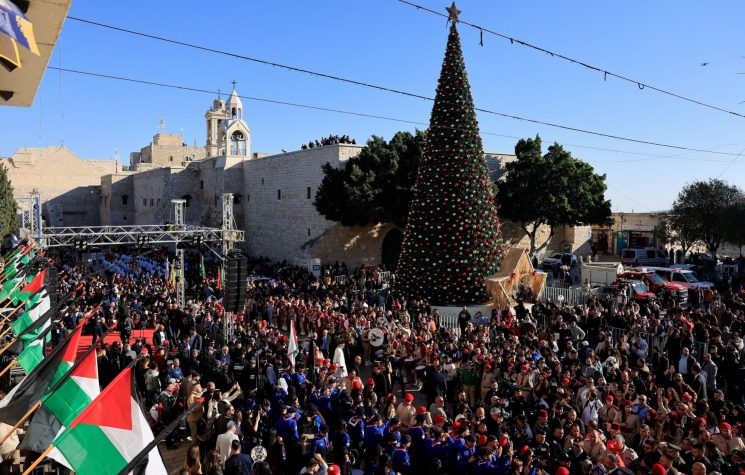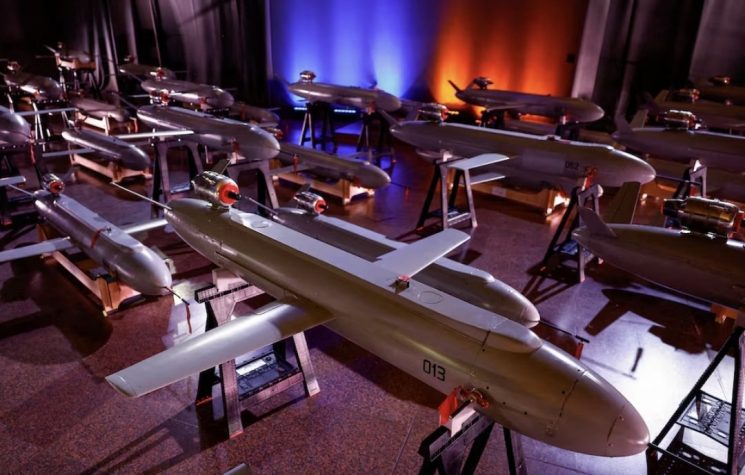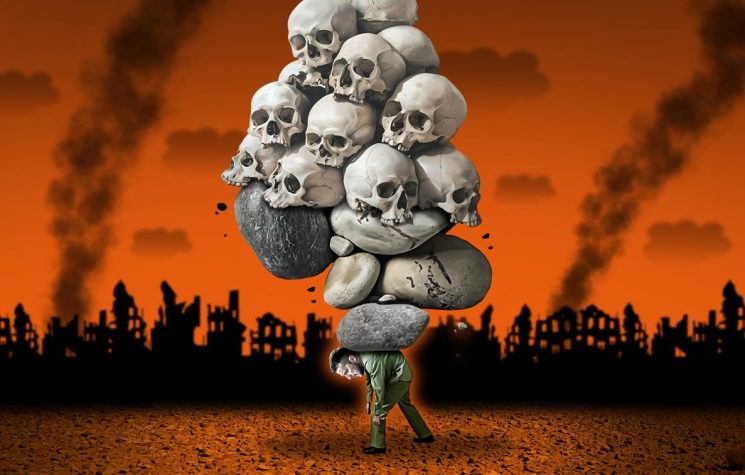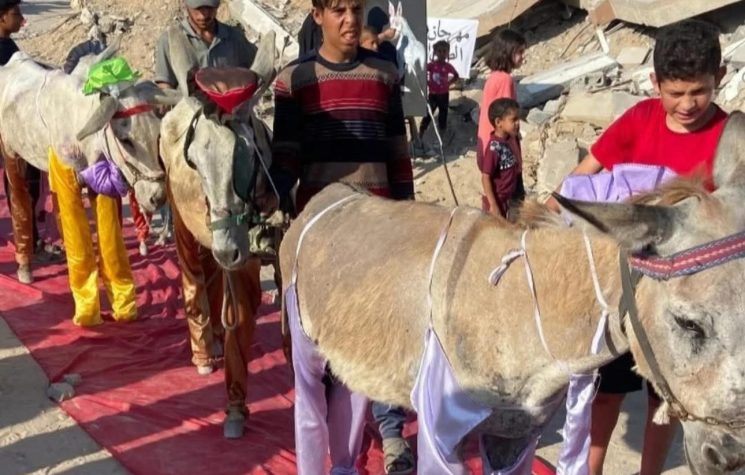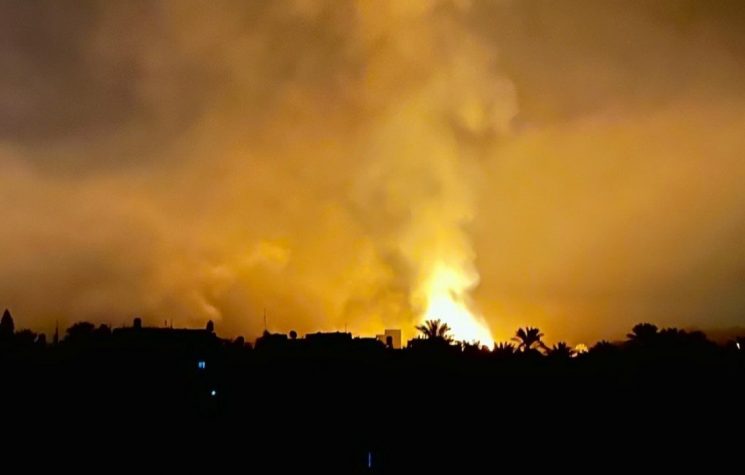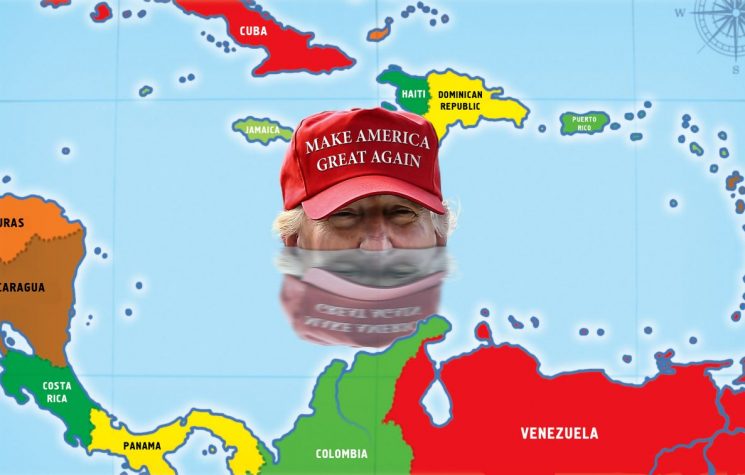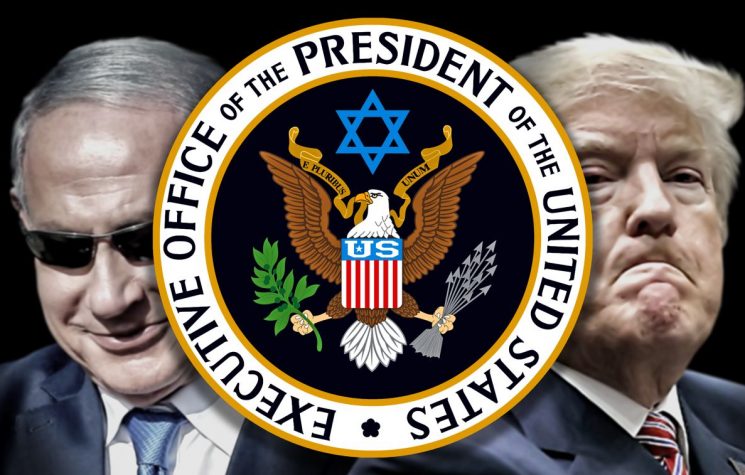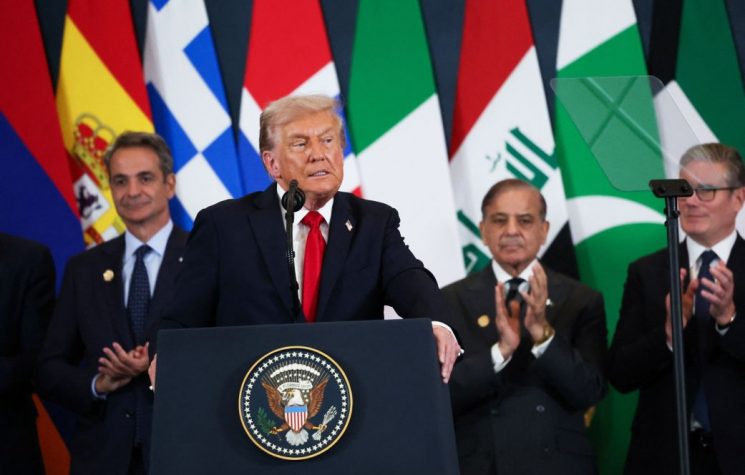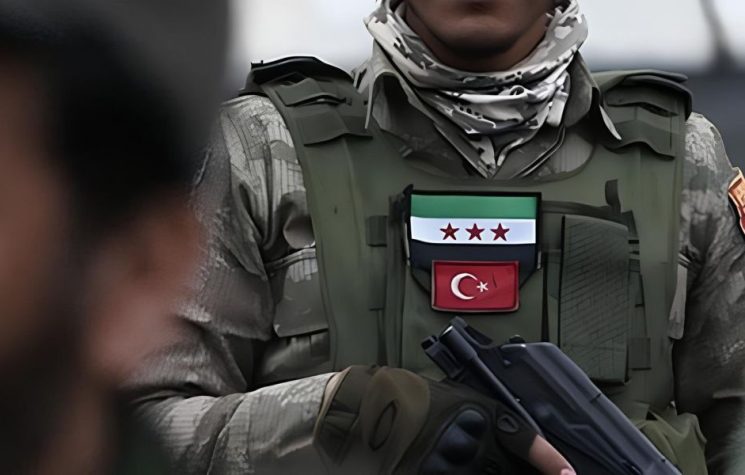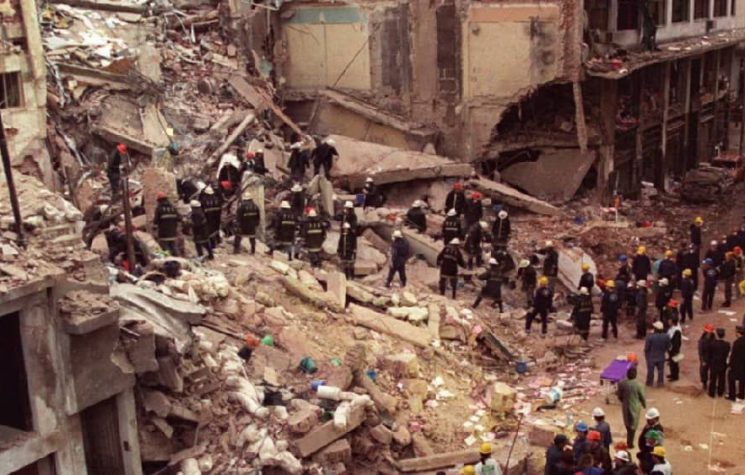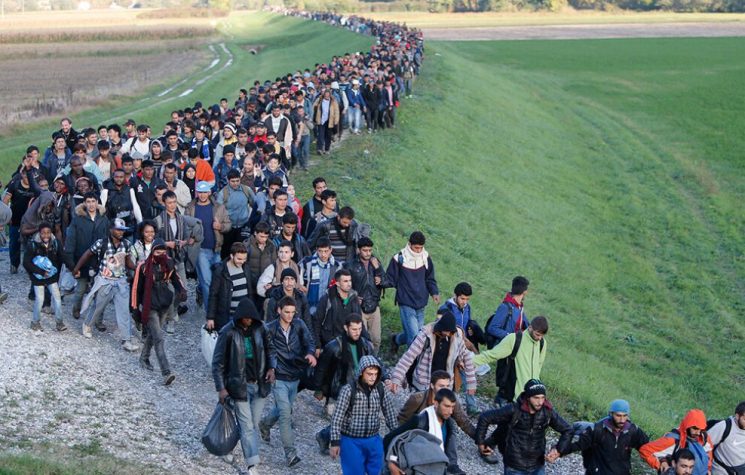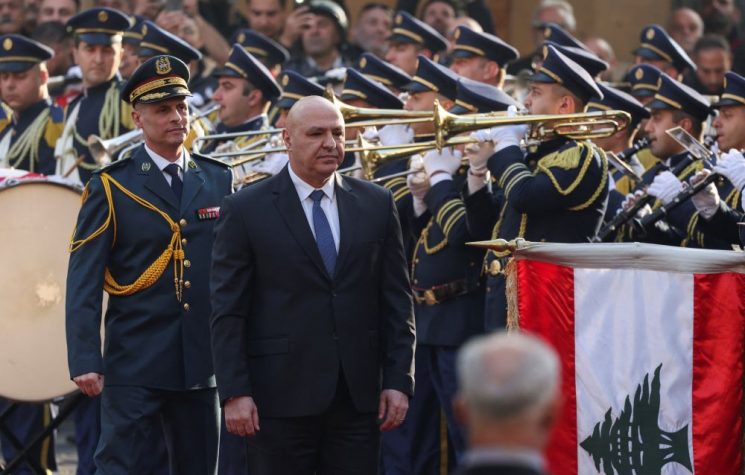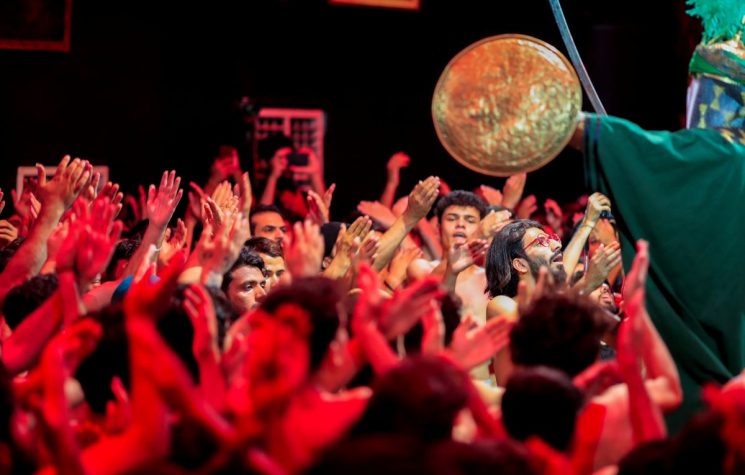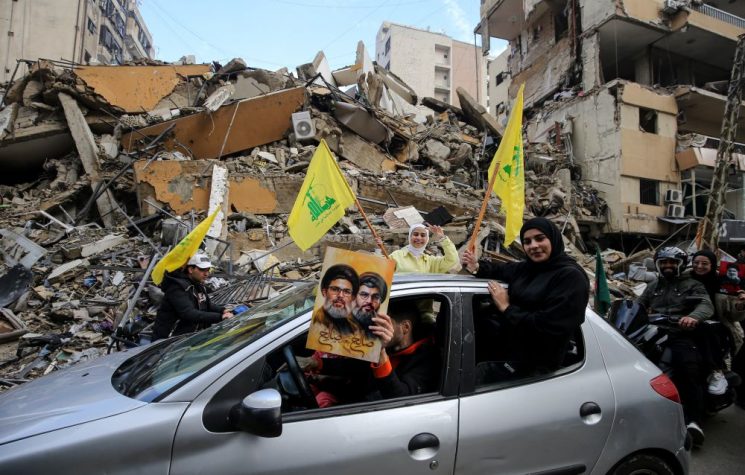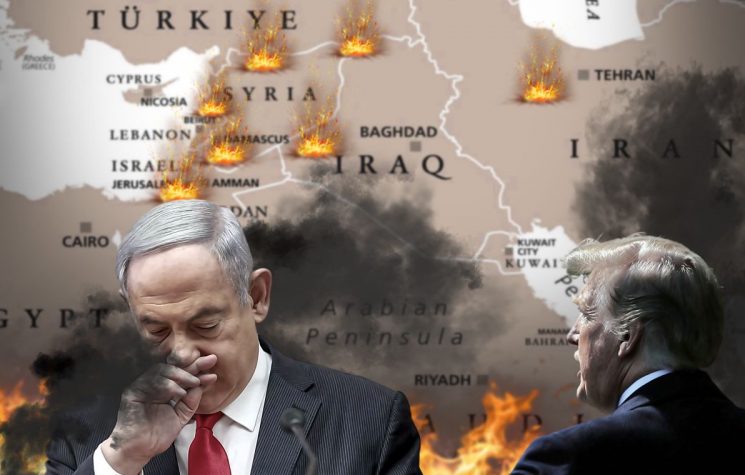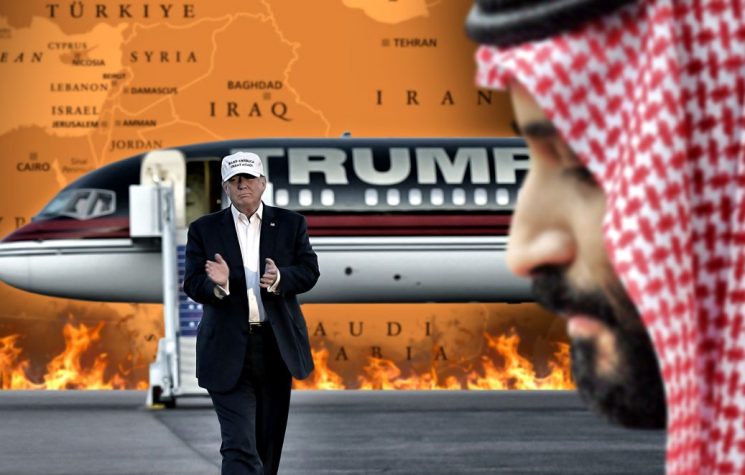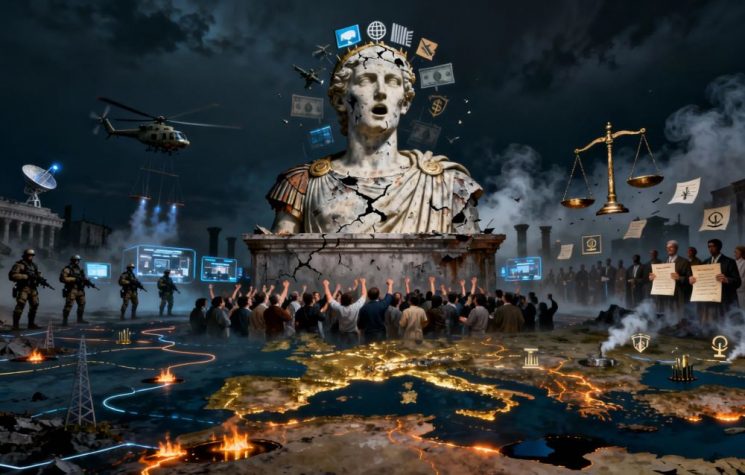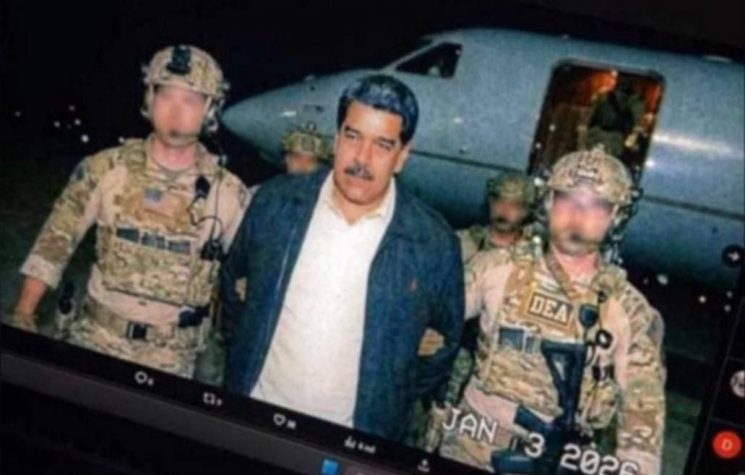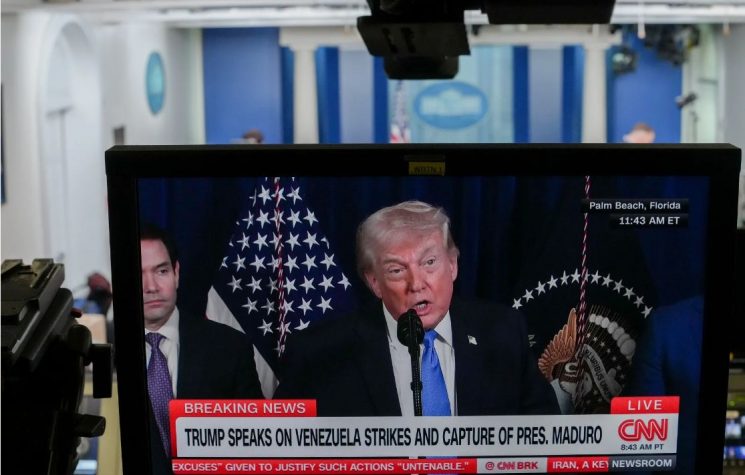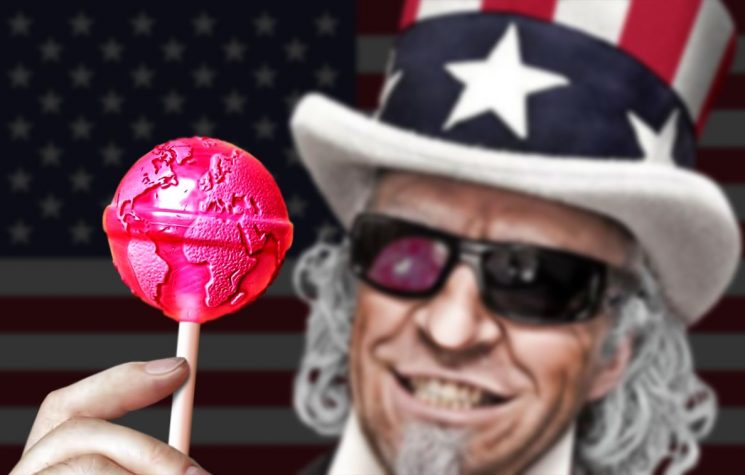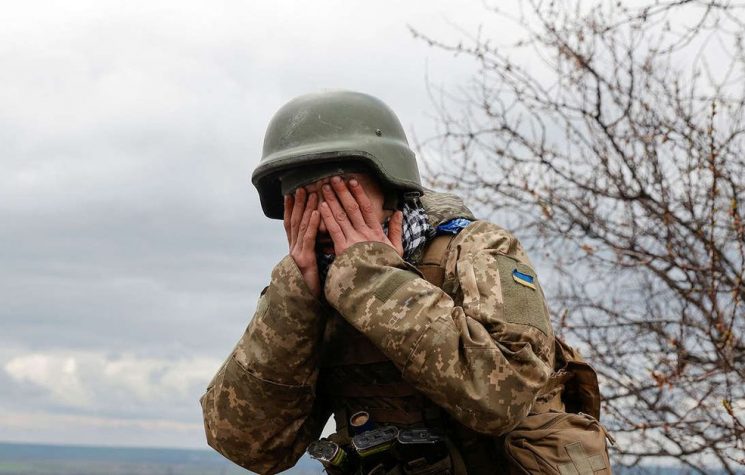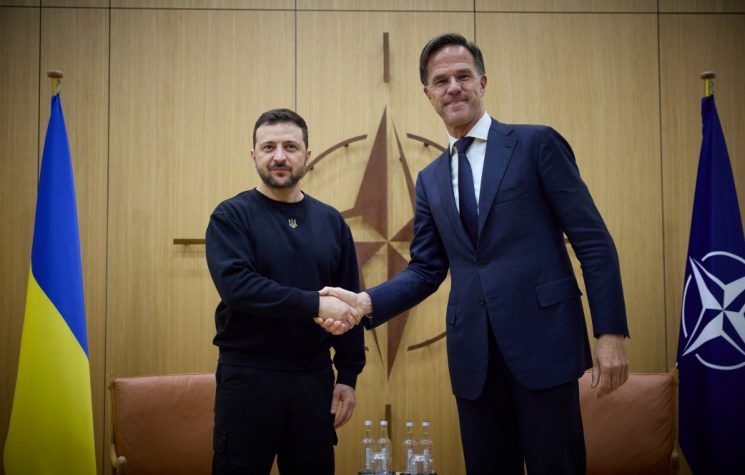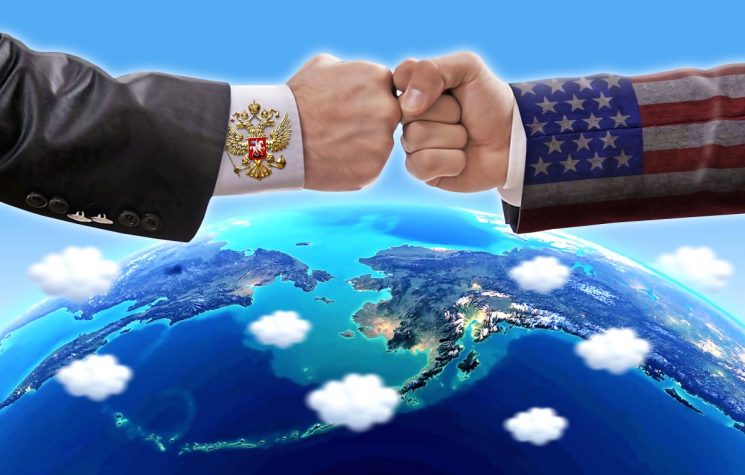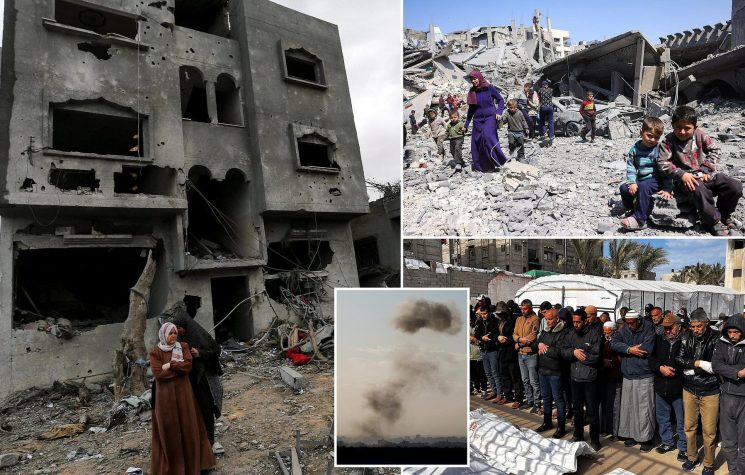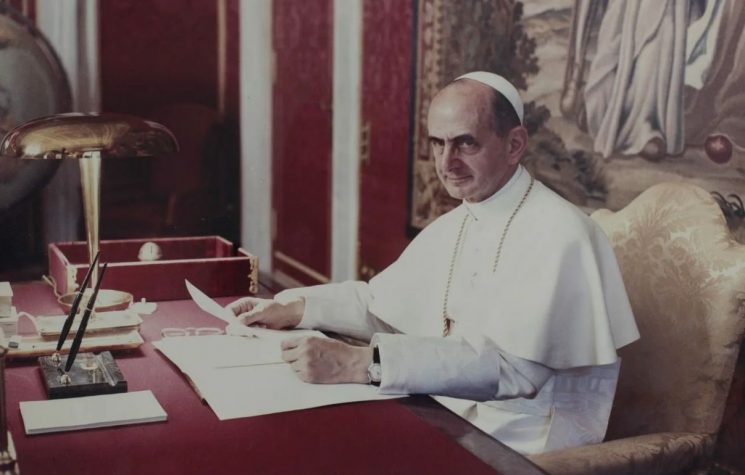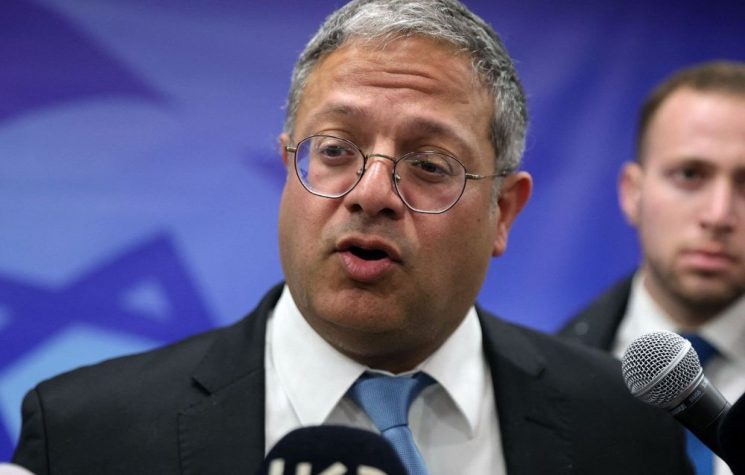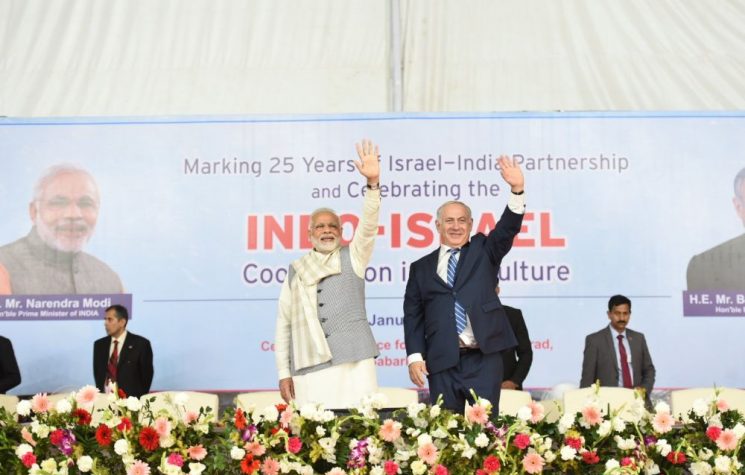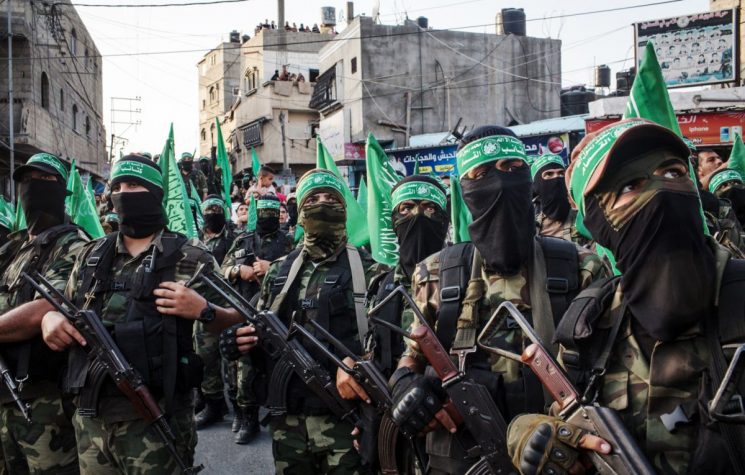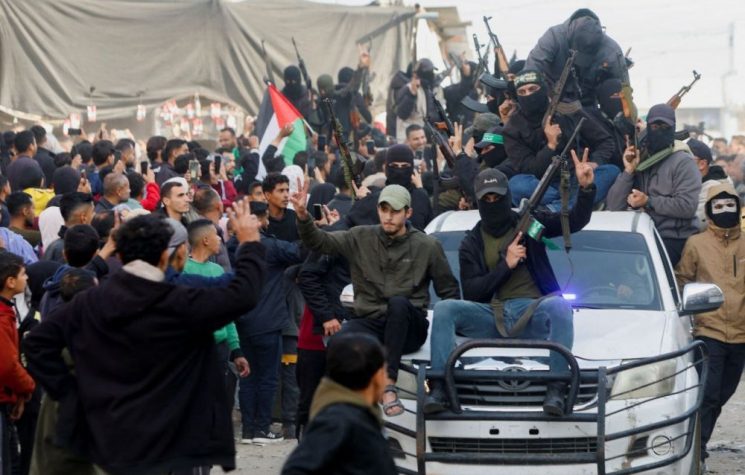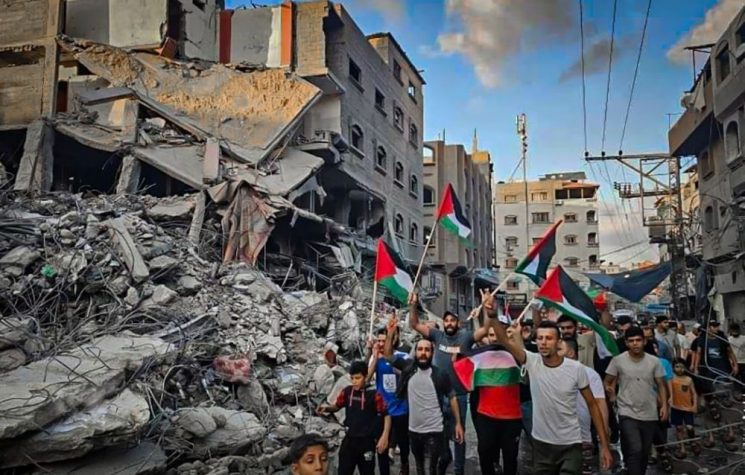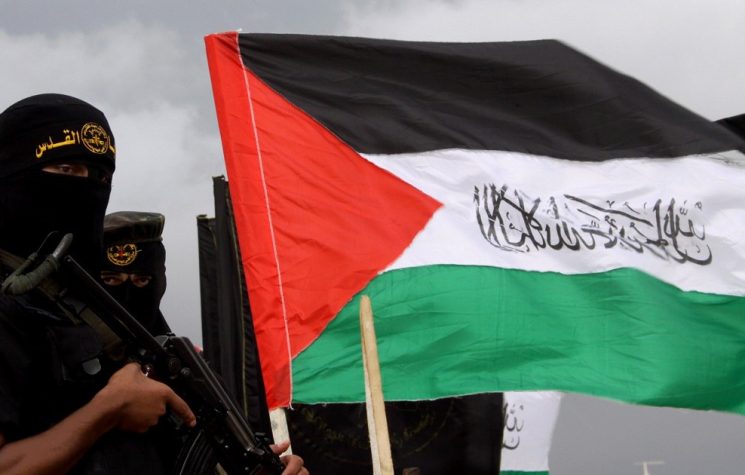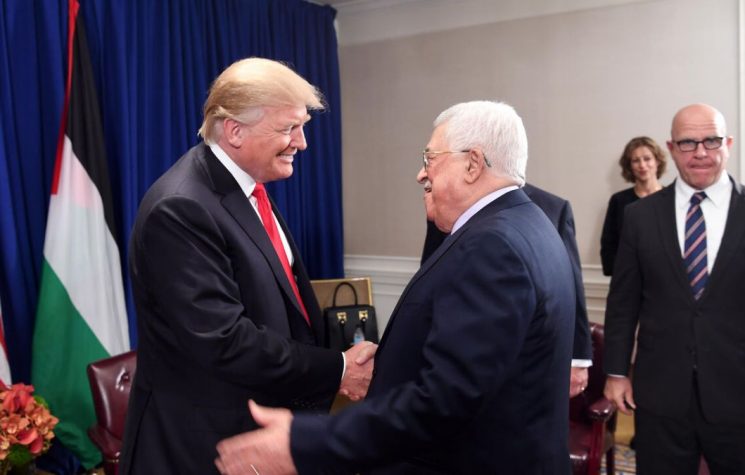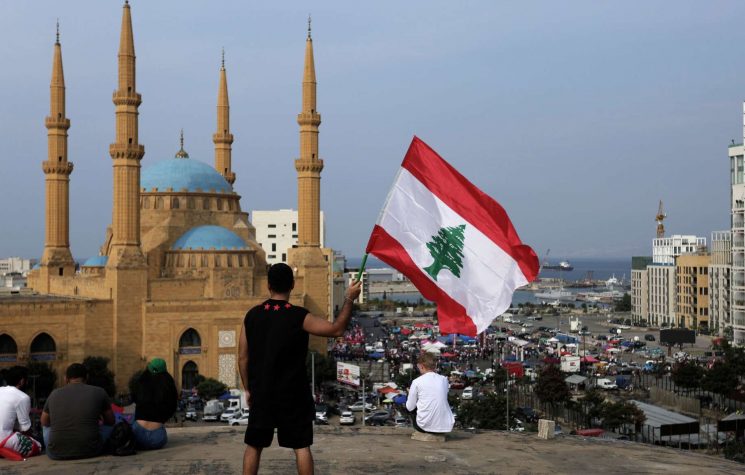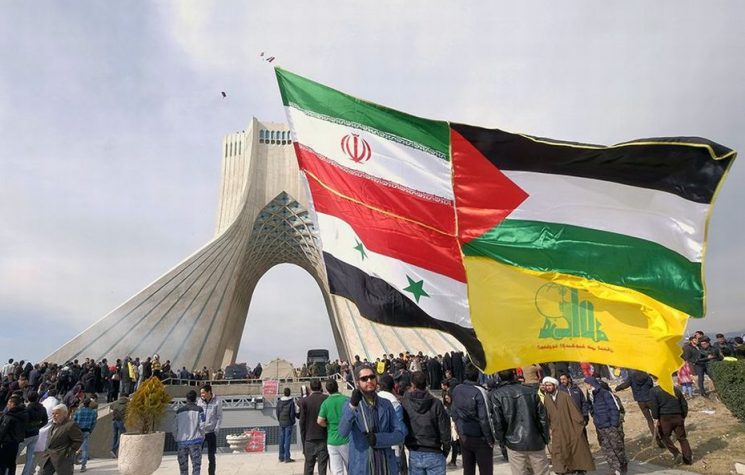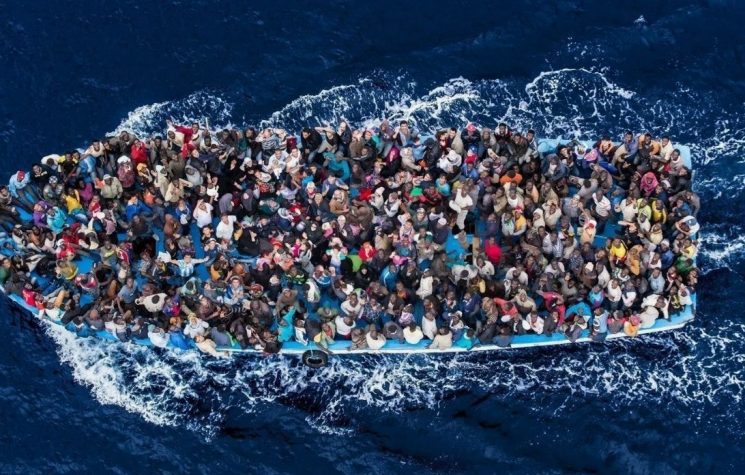The first thing that comes to one’s mind when analyzing the conflict is that the U.S. and its allies do not want to notice that the world is no longer the same.
Contact us: info@strategic-culture.su
It will be just enough to have a brief look at main hostilities and military developments since the October 7, 2023 to realise extreme intensification in threats, genocidal killings and the extent of fighting in the Middle East area.
To begin with, terror unleashed by Hamas fighters on October 7, 2023 resulted in brutal killing of 1,200 Israeli civilians and 253 hostages with most of them being held in captivity till now. This data is quoted according to Israeli tallies. In response to the October genocide Israel launched an attack on Gaza Strip which is still under way.
On March 26, 2024 Francesca Albanese, the UN Special Rapporteur on human rights in the Occupied Territories, presented a report called “The Anatomy of a Genocide” which claims that no less than 30,000 Arab civilians had been killed by then. Albanese called on countries to immediately impose sanctions and an arms embargo on Israel, while Washington again accused the council of a chronic anti-Israel bias.
It would be a serious omission not to mention that on the June 27, the U.S. House of Representatives passed an amendment to prevent the U.S. State Department from using Gaza’s Health Ministry statistics to cite the casualty figures for Israel’s genocide in Gaza. Israel regularly states that it has no information on the Palestinian civilians killed and wounded by its bombs. If the bill passes the Senate, the State Department’s silence on Israeli genocide of Palestinians will be certain.
In April this year there was an Israeli air attack by six missiles fired from F-35 targeting Iranian consulate in Damascus, capital of Syria. Among those killed were Brig Gen Mohammad Reza Zahedi and Zahedi’s deputy, Gen Haji Rahimi. It was also reported that Brig Gen Hossein Amirollah, the chief of general staff for the al-Quds force in Syria and Lebanon, was among the 11 victims.
Iran’s foreign minister, Hossein Amir-Abdollahian, said: “We consider this aggression to have violated all diplomatic norms and international treaties. Further, in a propaganda style, he continued “Benjamin Netanyahu has completely lost his mental balance due to the successive failures in Gaza and his failure to achieve his Zionist goals.” Some journalists were quick to note that unlike Israelis, even German Nazis did not attack diplomatic missions and diplomatic staff. Iran vowed to respond in same magnitude and harshness but apparently taking heed of president Biden’s request it responded lightly.
On July 7, Syrian state news reported that Israel had launched air strikes at the Syrian port Baniyas. In addition, air defence systems operated by Iranian militias were targeted on the coast close to Baniyas. Also, there were air strikes on Latakia that coincided with arrival of two Iranian ships. It is noteworthy that at the same time the U.S. gave a warning to Hezbollah. In response Russia strongly condemned the Israeli airstrikes at Baniyas, warning of potential “dangerous consequences.”
As reported on July 27, 2024, a rocket attack allegedly by Hezbollah. took place in Israeli-occupied Golan Heights. The strike fell from Lebanon in Majdal Shams village, killing 12 Druze teenagers. Israel said it would retaliate.
It did so by targeting on July 30 Fouad Shukri, the second-in-command of Hezbollah, as responsible for the tragedy in Majdal Shams. He was killed in the Shia district of Beirut with the help of an Israeli drone.
Hardly Iran’s leaders had a few hours to mourn the death of Hezbollah top official Fouad Shukr in Beirut who is believed to be buried under a mass of rubble, when Israel assassinated Hamas’s top political leader, Ismail Haniyeh, in Tehran on July 31. Newly inaugurated Iranian president Masoud Pezeshkian stated: “We consider it our duty to avenge his blood.” Israeli media reported that ministers and officials were told not to comment on Haniyeh’s killing.
On the same day the U.S. carried out air strikes described by Pentagon as defensive. The strikes aimed at a base south of Baghdad used by Iraq’s Popular Mobilization Forces (PMF). It killed four members of the group and wounded four others. Iraq’s PMF consists of several Iran-aligned armed militias. This is the latest proof that the U.S. participates in the Middle East regional conflicts against Iran on the side of Israel.
In the maze of Israel’s politics: Is genocide “moral?”
To put it mildly, the Israeli government situation is complicated. Officially, it has nothing to worry about. It has a powerful defender, the U.S., that supplies it with super modern weapons for which, unlike other American allies (western Europe, South Korea, Japan and Taiwan), it doesn’t have to pay. As well, as it was stated publicly on a number of occasions, there are no limits for any kind of assistance to Israel by the USA. Vice-presidential hopeful J. D. Vance advocates sending more funds to Israel in view of the Israel-Hamas war. Nevertheless, though American military intervention to save Israel is not excluded, the main fighting must be done by the Israeli Defense Force (IDF). Above all, the internal politics in dealing with the Gaza strip and West Bank with many contentious aspects are the responsibility of the Israeli government.
Let’s start with a few knotty problems within the present Israeli cabinet. The state of Israel has been seeking to weaken the PA’s authority in the West Bank. Even Israeli Defence Minister Yoav Gallant, perceived in Washington as a moderate, announced in May 2024 that Israelis would be allowed to return to three former West Bank settlements from which Israel withdrew in 2005 – violating commitments that Israel made to U.S. President George W. Bush in 2005. The more radical right-wing members of Israel’s current government, led by National Security Minister Itamar Ben-Gvir and Finance Minister Bezalel Smotrich, are more blunt about their intent to undermine the PA.
Smotrich created and runs the Settlements Administration, a new governmental body within the Defense Ministry that is empowered to appropriate land in the West Bank, construct new settlements, and demolish Palestinian buildings constructed without permits. As a leader in the settlement movement, he himself lives in an illegal by international standards settlement, legalizes retroactively the establishment of illegal outposts, what he characterizes as a retaliation against other states’ recognition of Palestine.
It should be recalled that under the Oslo Accords Israel collects taxes on goods that pass through Israel into the West Bank on behalf of the PA. Before October 7 last year those taxes comprised around 70 percent of the PA’s income. By now they have dropped by approximately 50%. At the same time, the international donations that contribute substantially to the PA’s revenue have vanished. Smotrich is just too happy to see the PA go broke. Already in May he declared: “Let it collapse!” As Shira Efron and Michael J. Koplow of Foreign Affairs note, “In return for agreeing to temporarily extend Israeli banks’ indemnity and release portions of the PA’s tax revenues, Smotrich has extorted big concessions, such as approvals for more settlement construction and the revocation of travel permits for PA officials.” Such a policy by Smotrich may have far reaching consequences – it may destroy any prospects for future well-functioning and stable PA state. Consequently, Israel’s Defense Ministry did not view his actions in favorable light. Israeli Prime Minister Benjamin Netanyahu is unwilling to do anything about it even if he really wanted to – his coalitions survival depends on Smotrich and Ben-Gvir.
What Smotrich is doing now is not the pinnacle of his political career. He is dead serious about expanding settlements with one million of new Jewish colonists. That’s on top of seven hundred thousand that already settled there.
He arrogantly declares: “For every country that unilaterally recognizes a Palestinian state, we will establish a settlement” and boasts that the Israeli cabinet approved his plan to legalize five controversial settlements in the occupied West Bank in retaliation for Palestinian diplomatic moves.
On July 13, in Tel Aviv Prime Minister Benjamin Netanyahu held a press conference dealing with the ICJ ruling that urged Israel to end its illegal control of the West Bank and Gaza, cease settlement activities, and provide reparations. Prime Minister Benjamin Netanyahu pointed out in a clever way: “The Jewish people are not occupiers in their own land — not in our eternal capital Jerusalem, not in the land of our ancestors in Judea and Samaria. No false decision in The Hague will distort this historical truth, just as the legality of Israeli settlement in all the territories of our homeland cannot be contested.” After ICJ Ruling on Illegal Settlements Israeli Cabinet gave him unanimous support and told him to “capture” the West Bank. He didn’t.
On July 27, dozens of U.S. medical professionals who worked in Gaza wrote a letter to Kamala Harris, Joe Biden and his wife, Jill Biden, describing the deteriorating situation in the territory. They summed it up as follows:
“’With only marginal exceptions, everyone in Gaza is sick, injured or both”
In addition, as Lebanese writer Ali Harb puts it, “the doctors and nurses shared harrowing details of the impact of Israel’s war, including widespread malnourishment, ailments and children shot in the head and chest regularly arriving for treatment.”
If the above information is correct, one can assume that what is taking place in Gaza is close to deliberate extermination. We can only hope against hope that Gaza is not deserted and depopulated and if it happens that it is that it won’t be used for mass Israeli settlement.
Hearing over and over again terrifying news about genocide in Gaza one may be interested to know what people like Smotrich would like to say about it.
In some of the latest pronouncements Smotrich complained that international pressure meant Israel had “no choice” but to bring in aid. He said that the main factor extending the war was the aid sustaining Hamas. His defense ministry colleague, Mr Gallant was just too willing to agree with him and stated: “Nobody will let us cause two million civilians to die of hunger, even though it might be justified and moral, until our hostages are returned.”
Relatively small Israeli settling activity has been taking place in Golan Heights. The Golan Heights are located to the northeast of Israel and the west of Syria and occupy just 1,800 km2. The Heights were part of Syria until 1967, when Israel captured most of the area in the Six Day War, occupying it and effectively annexing it in 1981. The USA is the only country recognizing Israel’s annexation. Syria tried to regain the Heights in the 1973 Middle East war, but failed. Already by the late 1970s Israel established 30 Jewish settlements in the Heights. In 2000, Israel and Syria held their highest-level talks over a possible return of the Golan and a peace agreement. But the negotiations collapsed.
By now the make-up of the population in the Golan Heights is as follows: 20 thousand Syrian Druzes and 60 thousand Israeli settlers.
Lebanon might be too much for the IDF after the Gaza fiasco
At the same time, it should be emphasized that it would be wrong to think that all that Israelis desire is about settling in captured Arab lands. Let’s openly acknowledge – Israel has about 60 thousand of its own refugees who were driven away from their farms and homes from the north of Israel proper by fear of Hezbollah’s incursions and Hezbollah’s shelling.
How has it come about? In recent months, Israel has assassinated three of Hezbollah’s senior commanders. Additionally, the Israeli Air Force has frequently struck weapons convoys and sometimes killed Hezbollah operatives in the Beqaa Valley, close to Lebanon’s border with Syria. In mid-July, Hezbollah confirmed the deaths of more than 370 of its fighters in Israeli strikes since the war in Gaza started. It has gradually increased the range and quantity of its own rocket attacks. As a result of it, about 30 soldiers and civilians have died on the Israeli side. Of a particular concern to Israelis was Hezbollah’s growing use of antitank rockets, which have a range of up to 6.5 miles and are highly accurate and difficult to intercept. Most importantly, towns and villages on both sides of the Lebanon-Israel border have been wiped out. According to the assessments on side of the border more than 1,000 houses and buildings have been severely damaged. The border skirmishes resulted in the long-term displacement of tens of thousands of Israelis and Lebanese.
In line with the Israeli government decision of October 7, 2023 all Israeli residents living within three miles of the northern border were ordered to evacuate. As a result, some 60,000 Israelis moved south. They are mostly staying at hotels around the country, including in Tel Aviv. All is financed by the state. At the time the order was issued, it was assumed that it would be temporary; no one guessed that these people would still be displaced more than ten months later. As soon as these villages and towns in northern Israel had been emptied, Hezbollah turned them into a shooting range, thus rendering them virtually uninhabitable.
Since late 2023 there were American-sponsored moves to bring peace to northern Israel and southern Lebanon. Amos Hochstein, President Biden’s special envoy to the region, has been trying to broker a ceasefire. However, Hezbollah has made clear that it will go on fighting as long as Israel’s war in Gaza continues. So the fighting goes on.
The situation in northern Israel provides a powerful push to unleash a war against Hezbollah and eliminate it once and forever. By June this year the IDF prepared a plan of a full-scale attack in southern Lebanon and it had been approved. On the other side, Hezbollah leader Hassan Nasrallah said in July that the group was prepared to extend its rocket attacks to a greater number of Israeli towns.
It became clear that a ground attack against Hezbollah could provide a major upheaval in the region and beyond. It was assumed that such a large conflict would not end quickly and could have serious repercussions for the forthcoming presidential elections in the U.S. According to Israeli intelligence estimates, Hezbollah’s weapons stockpile is more than seven times as large as Hamas’s. Hezbollah has hundreds of attack drones, 130,000–150,000 rockets and missiles at its disposal. Also, the group is supplied by Iran with hundreds of ballistic missiles that could reach every point in all of Israel.
To realize how devastating the war can be to both sides and how easily the IDF can get bog down in Lebanon it will be enough to recall Israel’s last war with Hezbollah in summer 2006 at the time when the group was a far less formidable fighting force.
The war ended in a stalemate with Hezbollah, despite losing hundreds of fighters remaining largely intact.
As things stand now, the Israeli government remains under the enormous pressure from its domestic audience; they want a decisive military action that would result in destroying Hezbollah once and forever. On October 10, U.S. President Joe Biden gave an important speech in which he promised American help to Israel against Hezbollah and Iran, including sending two aircraft carriers to the region. He also warned the Iranian leadership with one word: “Don’t.”
According to the reports, at Kirya, the IDF’s Tel Aviv headquarters, some officers were weeping as they watched Biden’s speech. One day later, Yoav Gallant and some of the generals tried to push Benjamin Netanyahu to approve a major operation against Hezbollah. Netanyahu knew two things. One, Biden’s “Don’t” applied as much to Iran as to Israel. Two, to boost Israeli morale he may be loud about “victory in sight” in Gaza but he knows just too well that a major attack on Hezbollah would in all likelihood end up in a ground invasion of southern Lebanon and he doubts whether the IDF is up to the task of fighting wars on two or more fronts. Keeping it in mind, he prevented for the time being Gallant entering his office and was quick to co-opt to his cabinet Gantz and Eisenkot, two former chiefs of staff for the IDF who represented the centrist National Unity Party. They provided a desirable counterbalance to the hawkish ideas of Gallant or the other leaders of his right-wing coalition. By now Israeli war on Hezbollah has been postponed. For how long? And is Hezbollah to postpone its war on Israel? These questions perturb people in the Middle East region and beyond.
Iran “running this whole show”
“Iran ‘running this whole show’,” is the recent opinion expressed by Yuli Edelstein, a member of Benjamin Netanyahu’s Likud Party. A moment later Edelstein added: “Israelis cannot live peacefully and strike new peace accords with their neighbours while they are threatened by Hezbollah in the north and Hamas in the south.”
Let’s find out to what extend Iran “is running this whole show”, what the aims of Iran’s foreign policy are and what are its links with Hezbollah, Hamas and Houthis.
One of the main three goals of the 1979 revolution was independence from the great power tutelage. It may be argued that Iran scored some success in its pursuit. Despite U.S. massive sanctions it is a member of the Shanghai Cooperation Organization as well as of BRICS. It can boast a great deal of cooperation with the Russian Federation and the People’s Republic of China. In recent months, with the mediation of China it normalized its relations with Saudi Arabia. It is a regional power with military presence in Syria giving political and military support to Hamas, Hezbollah and the Houthis in Yemen whenever possible. It is well-known that it opposes U.S. military presence in the Middle East. It is decidedly on the side of promoting a multipolar world.
On July 5, Masoud Pezeshkian was elected as the new Iranian president. His moderate electoral platform included talks with the West, doing away with Internet filtering, and ceasing the morality police’s harassment of women as well as improving healthcare and educational access for the poor.
His campaign had all signs of hard going. Initially, he was disqualified from the 2024 parliamentary elections for criticizing the morality police after Mahsa Amini – a 22-year-old Iranian woman – died in their custody after being arrested for not wearing her headscarf properly. It will be enough to say that Pezeshkian was reinstated in the parliamentary elections only after Ayatollah Ali Khamenei’s personal intervention.
Pezeshkian may have realized how much he owes to the supreme leader already one day after his election – the government security apparatus arrested Mohsen Borhani – a prominent lawyer critical of crackdowns on people protesting Amini’s death. Right after the inauguration, his attitude to the supreme leader and the Islamic Revolutionary Guard Corps (IRGC) was characterized by polite submission and respect. That in turn implies that he will unconditionally support Iran’s strong ties to its so-called axis of resistance, a network of allied non-state actors featuring Hamas, Hezbollah, the Houthis, and Iraqi Shiite militias. After all, the axis is the crown jewel of the Islamic Republic’s defense strategy, thanks to its regional influence and ability to disrupt economic chokepoints such as the Strait of Bab el Mandeb.
No wonder, Pezeshkian declared Iran’s backing for “the resistance of the people of the region against the illegitimate Zionist regime, as one rooted in the fundamental policies of the Islamic Republic.” Similarly, in a letter to Hamas chief – before his assassination – Ismail Haniyeh, Pezeshkian vowed that the Islamic Republic “will continue to support the oppressed Palestinian nation until the realization of all its ideals and rights.”
These days official Tehran doesn’t make any declarations about plans to destroy Israel. Nevertheless, in state-run media, many references to Israel are expressed in terms of extreme hostility. In fact, looking back, it can be recalled that in 2005, while addressing a conference “The World without Zionism”, Iranian president Mahmoud Ahmadinejad described Israel as a “disgraceful blot” that should be “wiped off the face of the earth”. He suggested to the gathered students in Tehran that a new wave of Palestinian attacks would be enough to finish off Israel. Scratching one’s head hard, it can be recalled as well that five years prior to Ahmadinejad former president Hashemi Rafsanjani called in a lurid statement for a Muslim state to annihilate Israel with a nuclear strike.
Core allies of the “axis of resistance”
What are the attitudes to Israel of those associated with Hamas and Hezbollah? They are not only fighters but, optimistically speaking, possible peace negotiators.
A close look at Hamas discloses a rather frightening picture. The not so distant events in the Middle East expose a strong desire of war – with the use of terrorist means – by democratically elected Hamas government in Gaza against the democratic state of Israel. In this context it should be recalled that in the elections held on January 26, 2006 figures from Palestinian officials confirmed Hamas’s shock win in the Palestinian parliamentary election over the once-dominant Fatah party.
Polls had predicted a coalition between the two parties as the most likely outcome of the vote, but a surprise surge in support for the Islamists gave a lead to a party that calls for the destruction of the state of Israel. The preliminary count put Hamas on 76 seats to Fatah’s 43 in the 132-seat chamber. The result dashed any hopes for peace between Israelis and the Palestinians. The then U.S. president George Bush said the United States would not deal with a Hamas-led government unless the party recognized Israel’s right to exist. It is commonly known that since then, prior to October 7, 2023 Hamas had been working ceaselessly collecting weapons in underground stores and building about 500 kilometers of bunkers, tunnels and shelters deep underground.
I can recall a mini debate in The Australian by its foreign editor Greg Sheridan in 2011 when a resolution for Palestinian statehood was brought to the UN General Assembly. The editor opposed establishing Palestinian state on the basis of Hamas’s views in line with the Hamas Charter of 1987 containing the most violent language and calling for the destruction of Israel. To those unfamiliar with the full dimension of the Israeli-Palestinian conflict it might be worth citing just a preamble of it which reads: “Israel will exist and will continue to exist until Islam will obliterate it, just as it obliterated others before it.”
In a revised version of the 2017 charter with softened Islamist rhetoric, one can find the insistence on the right of Palestinian state to be “from the river to the sea” but in two places it makes hints about two-state solution. Those hints may be considered as possibly first steps toward facilitating peaceful negotiations.
The creation of Hezbollah coincided with Iran’s efforts to export its 1979 revolution among other things to confront IDF after it invaded Lebanon in 1982. It was trained and supplied by Iran. Nowadays, it is possibly one of the best-armed non-state groups in the world. Its stockpile includes about 100,000 rockets and drones. Its leader Sayyed Hassan Nasrallah boasts that his group numbers 100,000 fighters. Hezbollah has ministers in the Lebanese government and members of parliament. It managed to convince many Lebanese Shias, that the group defends Lebanon from Israel. It is a sworn enemy of Israel and openly calls for its destruction.
U.S. “iron clad” support for Israel
Joe Biden has assured Israeli government publicly a number of times about American “iron clad” support for Israel. However, after a recent visit by Netanyahu to the USA. Biden, concerned about Chinese involvement in forming a Palestinian Authority combining Fatah and Hamas, authorized a secret U.S., Israel and UAE meeting in Abu Dhabi supposedly about post-war Gaza plan. Apart from some material assistance to Palestinians in Gaza it ended in a total fiasco. Most essentially, because Netanyahu refused PA an official governance role and rejected a two-state solution. Not only that: Biden falsely claimed that Hamas in disregard to his peace plan (how manty people heard about it?) is the only one willing to continue war. What’s more, Biden recommends to “eliminate” the group. Is it how the “iron clad” support is to ensure peace in Gaza?
While two-state solution seems to be a taboo subject in electoral campaign by Kamala Harris and her running mate Tim Walz, they said enough to cast doubts on it. For instance, Harris during her Senate tenure in 2017, co-sponsored a measure to condemn a United Nations Security Council resolution that denounced Israel’s illegal settlements in the occupied West Bank. Is Walz as pro-Israeli as Harris? Yes, as a congressman, Waltz’s actions were similar to those of Harris. Between 2007 and 2019, he voted in favor of Israel a number of times. As well, he voted to condemn the United Nations resolution that declared Israeli settlements on the West Bank illegal. Such votes condemning the UN resolution by Harris and Walz rule out any prospect of an independent Palestinian state.
Trump’s cherished ally
The presidential nominee Trump, while talking about his policies and believes in 2015, said some things about Muslim migrants which are very much valid in his 2024 presidential campaign. So he said he would send back Syrian migrants seeking asylum in the U.S. His justification for this was “that the Paris attacks prove that even a handful of terrorists posing as migrants could do a catastrophic damage.”
In his current electoral program, he withdrew from the previous bipartisan consensus by saying he wasn’t interested in a separate Palestinian state. He calls Israel a “cherished ally.” It should be recalled that in 2017, he recognized Jerusalem as the capital of Israel and moved the U.S. Embassy there from Tel Aviv and in 2019, he recognized Israeli sovereignty over the disputed territory of Golan Heights. The picture of his view of the Middle East wouldn’t be complete without including Iran and Syria.
Trump’s presidential term focused on isolating Iran, which he calls “the leading state sponsor of terrorism.” He withdrew from the Iran nuclear deal in 2018 and re-imposed sweeping economic sanctions on the country boasting that Iran’s economy was “shattered.” In 2020, he ordered the assassination of Islamic Revolutionary Guard Corps leader Qasem Soleimani.
One of his final decisions during his presidential term, was designating the Iran-backed, Yemen-based Houthi rebel movement as a foreign terrorist organization. Ignoring Syrian and some international protests he has favored leaving some troops in Syria for access to its oil.
His running mate comments such as “If you’re going to punch the Iranians, you punch them hard” or “you want to get this war (in Gaza) over and as quickly as possible, because the longer it goes on the harder [Israel’s] situation becomes” leave no doubts that Trump and Vance will act in unison, if elected.
How hard Trump is ready to hit Iran came out during his recent meeting with Netanyahu in the Congress. Sharing a clip of Israeli PM Netanyahu mentioning alleged Iranian plots against Trump he said he hoped the U.S. would “obliterate” Iran if U.S. leaders are threatened.
Multipolar world order: The U.S. must recognize new realities or we are all doomed
The first thing that comes to one’s mind when analyzing the conflict is that the U.S. and its allies do not want to notice that the world is no longer the same. Looking back 20 years or so, at the military potential of the main regional players in the Middle East the situation has undergone a remarkable shift in favor of Israel’s rivals. Israel’s IDF has the most modern equipment and technologies but Iran, Hezbollah and even Hamas did a lot of expanding and catching up. No wonder, Israel despite strenuous efforts, American expertise, logistics and political guidance has not been able to crush the resistance of Palestinian fighters in the Gaza Strip. According to IDF’s own assessments it is not in a position to defeat Hezbollah let alone overcome Iran. That’s why, in line with Biden’s earlier promises, despite already having a few bases in the region, the United States has just deployed additional warships and fighter jets supposedly to defend the State of Israel.
The second feature of the prevailing conflict in the Middle East is its long-term nature and ever-present number of conflicts that could be classified as postponed wars. A short list of such conflicts would include, Hamas versus Israel, Hezbollah versus Israel, Iran versus Israel and Yemen (Houthis) versus Israel. Obviously, these armed groups and countries are not only against Israel but it is understood that Israel is against them as well. As the United States is deeply involved on the side of Israel, it has to face military opponents against its armed forces. The same may apply to a lesser extent to such countries as France and the UK.
Another striking feature of the Middle Eastern scenario is that the U.S. seem to be acting as if it was a peacemaker and defender of democracy. It has just gone ahead with another “peace” initiative. Namely, through behind scenes moves combined with sending emissaries to achieve a ceasefire in Gaza in return for abandoning Iran’s retaliation against Israel. That was the hope among regional leaders gathered at an emergency summit in Jeddah. Proving how sober-minded Pezeshkian was he commented on the initiative: “If America and Western countries really want to prevent war and insecurity in the region, to prove this claim, they should immediately stop selling arms and supporting the Zionist regime and force this regime to stop the genocide and attacks on Gaza and accept a ceasefire.”
Riyad Mansour, Palestine’s Permanent Observer at the UN was equally rational when he said: “The region does not need escalation. What the region needs is a ceasefire. What the region needs is to address legitimate rights. I have a feeling that Prime Minister Netanyahu wants to drag President Biden into a war with Iran”
Countries such as the U.S., Qatar and Egypt, issued a joint statement urging Israel and Hamas to resume talks to reach a ceasefire in the Gaza Strip. What are the reasons for it? Is it because Biden and Harris unwelcome escalation of conflict close to the U.S. presidential elections? Another reason could be that those misinformed and uninformed which abound on our planet can perceive all this as U.S. peacemaking activity boosting its favorable image all over the world. The talks about a ceasefire in Gaza look absurd. How can they negotiate any Gaza ceasefire without Gaza representatives. How can a newly appointed political chief of Hamas, Yahya Sinwar participate in negotiations? Since the October 7, 2023 he has been operating from Gaza tunnels. How can one envisage him communicating with negotiators let alone arrive at the negotiating table in person if Netanyahu declared that he would be liquidated?
What is this ceasefire initiative all about? For anyone familiar with the Israel-Palestine affairs the peace initiative is just a bluff. Biden can hardly influence Netanyahu. He is flooding Israel with billions of dollars in military gear regardless. There is no reason whatsoever to think that Netanyahu’s stand on Gaza and the two-state solution will be any different than it was during recent supposedly peacemaking meeting in Abu Dhabi.
And now a crucial question: Has Iran really abandoned its retaliation plans? The supreme leader, Ali Khamenei who solemnly promised to “harshly punish” Israel over the assassination of the Hamas leader Ismail Haniyeh in Tehran and the IRGC confirms the order to “punish” Israel will be implemented. The supreme leader doesn’t mince his words. This, in all likelihood will be coordinated with the attack by Hezbollah. The group has its own scores to settle with Israel. The group’s top military commander, Fu’ad Shukr was killed in Lebanon by Israel one day before killing Haniyeh in Tehran. Consequently, a new scenario triggering regional war is probable.
Most importantly, the region has been crucial (oil, anti-terrorism and strategic location) particularly to Russia and China. Those countries have taken some decisive countermeasures to prevent the U.S. “America First” domination of the region.
China has in recent months demonstrated growing diplomatic influence in the Middle East. It enjoys strong ties with Arab nations and Iran. Significantly, last year, China brokered a peace deal between longstanding regional foes Saudi Arabia and Iran.
In addition, China called for a larger-scale Israeli-Palestinian peace conference and a specific timetable to implement a two-state solution. Unfortunately, in the light of the latest anti-Palestine western actions Chinese calls must have fallen on death ears of high-ranking Israeli and American officials.
Let’s now consider the option of Iran’s obliteration by the U.S. in response to the forthcoming Iranian retaliation or in the post November 5 unfolding. Can anyone in their right senses imagine Russia’s or China’s inaction? Under the gloomy scenario of U.S. turning Iran to ashes with massive carpet bombing or nuclear weapons, can such powers remain passive and silent? Let’s imagine ruins and charred Iranian cities and towns, devastated and depopulated Iranian regions with “brave” Yankee soldiers advancing relentlessly and declaring to barely alive, sick and unenthusiastic survivors that now they are free, will live under democracy and in friendship with the U.S. and their allies. That horror scenario would have new political ramifications with Iran turning into a U.S. vassal state and U.S. bases established just in close vicinity of Russia and on the border with the Commonwealth of Independent States. Nothing has been mentioned about possibly skyrocketing oil prices. Can such a nightmare script or part of it be allowed to happen? The answer is “a loud no.”
It will be reasonable to think that some moves – most of them behind the scenes – have already focused on how the obliteration scenario can be prevented. Suddenly, the specter of a worldwide nuclear conflict appears.
What we know from the official sources of information is that Iran asked Russia for military assistance. The New York Times has reported that the Russian Federation was already supplying Iran with advanced radars and air defenses.
The final accent of Middle Eastern deliberations is to realize that the conflict in the Middle East has wider ramifications and interconnectedness. Surely, it is not a regional skirmish. The U.S. and their allies are not only interfering in the Middle East.
They stir in the Far East, Africa and Ukraine.
Ukraine uses German missiles Taurus, British Storm Shadow and American ATACMS. Unlike earlier, they “allow” the Ukrainian regime to hit Russian targets deep in Russia. When queried about such a dangerous state of affairs, they give evasive answers of the following sort: “Once we pass the missiles to Ukrainians they are theirs and that’s their responsibility what they will do with them,” but why don’t they ask themselves an essential question: “Had we not given them our missiles would they be in a position to fire them at Russian targets?”
Putin on a number of occasions warned the West that once they supply Ukraine with long-range weapons capable to hit targets on Russian soil, Russia may respond symmetrically, that is provide long range arms to other countries to strike Western targets. The possibilities are that among such countries could be Iran.
Anticipating such developments one can envisage a caricature-like situation. Namely, Jill Biden wakes up Sleepy Joe with the words: “Joe, the unthinkable happened! They hit the Pentagon with a powerful rocket. The major part of the building has gone, there are human fatalities as well. I have always thought that the enemy would attack a base with our brave troopies somewhere far away but this is not the case.” Awestruck Joe replies: “I told you many times that you couldn’t trust those Russians but you didn’t believe it.”










